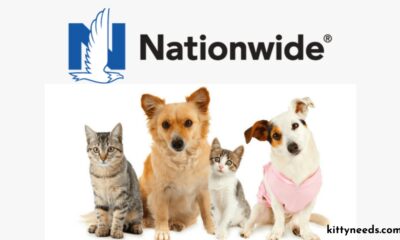Entertainment
The Coomer Party Phenomenon: A Deep Dive

Coomer Party
In the vast and rapidly changing landscape of digital culture, new trends and phenomena emerge with a frequency and intensity that can be overwhelming. One such phenomenon that has triggered significant discussion and raised pertinent questions about the online world is the Coomer Party. This term, although seemingly playful at first, alludes to a deeper undercurrent in the digital social fabric and has far-reaching effects that warrant a detailed examination.
From its enigmatic origins to its influence on mental health, consumption patterns, and more, we’re about to unravel the layers of this intriguing digital labyrinth. Whether you’re a seasoned netizen or just started navigating the online realm, understanding the Coomer Party and the complexities it entails can offer valuable insights into the current state of internet culture.
Defining the Coomer Party and Its Emergence
The term ‘Coomer Party’ has a deceptive and enigmatic ring to it, one that seems to invoke a mix of curiosity and skepticism. But what does it really mean, and how did it find its place in the lexicon of internet culture?
Deconstructing the Name: The Coomer’s Roots
The word ‘Coomer’ stems from 4chan, an imageboard site known for birthing countless internet phenomenons, memes, and slang. Initially, the term referred to males who were perceived as social outcasts, typically embodying characteristics akin to excessive masturbation and social ineptitude. The Coomer concept was first popularized through the Wojak meme, depicting a miserable-looking, balding man staring at a computer screen, which became synonymous with the Coomer archetype.
The Evolution of Coomer to Coomer Party
Over time, the term ‘Coomer’ took on a life of its own, branching into the ‘Coomer Party’ phenomenon. Here, ‘Coomer Party’ refers to events, real or virtual, which might appeal to individuals who identify with the Coomer persona. These ‘parties’ often revolve around the consumption and sharing of media related to isolation, chronic boredom, and, in some cases, explicit adult content. But the crux of Coomer Party is not so much about the explicit content itself, but the complex interplay of behaviours and relationships it represents within online communities.
Where does it Happen: Coomer Hotspots
Coomer Parties predominantly take place on anonymous online hubs, such as Discord servers and private imageboards, where users can share niche and sometimes controversial content without fear of judgment or repercussions. These hubs become echo chambers for the Coomer mindset and serve as bastions of a unique online subculture.
Understanding the Coomer Phenomenon
The Coomer Phenomenon is more than just a set of parties or gatherings. It represents an amalgamation of digital behavior, psychological impressions, and the manifestation of a virtual lifestyle.
A Cultural Analysis
To understand the Coomer Party is to understand the cultural dynamics at play in the spaces it occupies. These gatherings often serve as a form of counter-culture, rebelling against conventional social norms and media archetypes. The tendency to indulge in excessive media consumption under the guise of ‘parties’ reflects a different set of values and drivers that have taken root in these digital enclaves.
The Digital Lifestyle
Coomer Parties give a glimpse into what could be termed as a ‘digital lifestyle,’ where the consistency and pervasiveness of online interaction mimic the structure of a real-world social schedule. The continuous feed of content, often seeking to engage and trigger specific responses, replaces organic human engagement.
The Coomer’s World
For many participants, Coomer Parties are a retreat from the rigors of daily life, providing a sense of community and belonging that they may not find elsewhere. However, for some, it becomes a solitary pursuit that amplifies feelings of isolation and disconnection.
Impact of Coomer Parties
The influence of Coomer Parties extends beyond the digital realm, seeping into the mental and behavioral components of its participants, as well as the broader culture they inhabit.
Mental Health and Social Behavior
Participation in Coomer Parties can contribute to a range of mental health issues, such as depression and social anxiety, by reinforcing negative self-images and habits. The behavior patterns associated with these online events can spill over into real life, adversely affecting personal and social well-being.
Digital Consumption Patterns
Coomer Parties are emblematic of a shift in the consumption of digital media, one that is both directed and unrestricted. Participants may spend hours or even days immersed in content that becomes increasingly specialized, deepening the isolation from mainstream narratives and social constructs.
The Ripple Effect on Society
Indulging in Coomer Parties raises questions about the broader implications for society. These gatherings can foster a sense of community and shared identity among participants, but also exacerbate social ostracization based on the tacit acceptance of certain harmful norms and behaviors.
Engagement with Coomer Content
The psychological aspects behind engagement with Coomer content are as complex as the digital ecosystems in which they thrive.
The Pull of the Content
Coomer content is designed to elicit specific emotional and psychological responses, often tugging at the threads of insecurities and unmet needs. The instant gratification and the illusion of connection it provides are potent forces that draw people into the Coomer community.
The Motivations of the Participants
Unpacking the deep motivations of Coomer Party attendees can be a challenging endeavor. While for some it may signify a form of protest against societal expectations and norms, for others, it is a refuge that fulfills a deeper longing for acceptance and understanding.
The Societal Implications
The rise of Coomer Parties signals a shift in the way society understands and interacts with digital content. It presents a fragmented mirror, reflecting the diverse and sometimes disconcerting layers of human social and psychological needs that are increasingly mediated by the digital sphere.
Controversies Surrounding the Coomer Party Phenomenon
As with any significant digital phenomenon, the Coomer Party has not been without its controversies and debates.
Ethical Considerations
The nature of the content shared and consumed during Coomer Parties raises ethical red flags, particularly concerning the representation and treatment of individuals in adult media. The anonymity of the platforms where these events take place adds another layer of opacity, making it challenging to monitor and address potential wrongdoing.
Legal Ambiguities
The legal landscape surrounding Coomer Parties is murky at best, with questions arising about the responsibility of platforms hosting such content. The blurring of lines between freedom of expression and the propagation of harmful content has yet to be untangled in a way that is effective and just.
The Path Forward
Where do we go from here in our understanding and management of the Coomer Party phenomenon? Both users and platforms must recognize their roles and responsibilities in shaping the digital culture. A nuanced approach that balances freedom with accountability is paramount in navigating these complex waters.
YOU AMY ALSO LIKE
Integremos | Tech Solutions: Navigating the Waves of Innovation
Conclusion
The Coomer Party phenomenon is a multi-faceted puzzle, one that warrants thoughtful deconstruction and analysis. What might initially appear as an innocuous and humorous term hides within it layers of behavior, culture, and impact that are influential and deserving of attention. Whether you engage with the Coomer Party phenomenon directly, or are merely an observer, understanding its contours can provide valuable perspectives on where we stand amidst the grand tapestry of digital culture.
Frequently Asked Questions (FAQs) about Coomer Parties
Q1: What is a Coomer Party?
A: A Coomer Party is a digital event where participants engage in the collective consumption of adult media through online platforms, often involving a community aspect where content is shared, discussed, and contributed by attendees. It represents a segment of digital culture where individuals find a sense of belonging and escapism.
Q2: Why do people participate in Coomer Parties?
A: People participate in Coomer Parties for various reasons, including seeking a sense of community, fulfilling unmet emotional or psychological needs, protesting against societal norms, or simply for entertainment. The motivations are as complex and varied as the individuals involved.
Q3: Are Coomer Parties legal?
A: The legality of Coomer Parties is a gray area, largely dependent on the content shared and the laws of the country in which they occur. While participating in these parties isn’t illegal per se, the dissemination of certain types of adult content may violate laws or platform policies.
Q4: How do Coomer Parties impact mental health?
A: Participation in Coomer Parties can have detrimental effects on mental health, including contributing to depression, social anxiety, and reinforcing negative self-images. The isolation from mainstream social constructs and the reinforcement of certain behaviors can also affect personal well-being.
Q5: What are the societal implications of Coomer Parties?
A: Coomer Parties can both reflect and contribute to shifts in societal views on digital content consumption, community, and social norms. While they may offer a sense of belonging to participants, they also pose risks of exacerbating social ostracization and promoting harmful norms and behaviors. Understanding and addressing these implications is crucial for navigating the challenges of digital culture.

-

 Pets and Animals7 months ago
Pets and Animals7 months agoShovel Dog: Everything You Need to Know
-

 Pets and Animals7 months ago
Pets and Animals7 months agoHow To Trim Dog Nails: A Step-by-Step Guide for Painless Pups and Peace of Mind
-

 Pet Care Guides7 months ago
Pet Care Guides7 months agoGive a Loving Home: Adopt a Pet, Change a Life with Pet finder
-

 Pets and Animals7 months ago
Pets and Animals7 months agoHow Often Do You Take A Cat to the Vet? A Guide for Caring Owners
-

 Pets and Animals7 months ago
Pets and Animals7 months agoBubonic Plague case oregon cat: A Modern Tale of Medieval Disease
-

 Pet Care Guides7 months ago
Pet Care Guides7 months agoThe Definitive Guide to Rimadyl Carprofen Dogs: Uses, Dosage, and Safety
-

 Other7 months ago
Other7 months agoHow to Hello kitty drawing: A Step-by-Step Guide for Fans of All Ages
-

 Pet Care Guides7 months ago
Pet Care Guides7 months agoHere’s Why Nationwide Pet Insurance Should Be on Your Radar